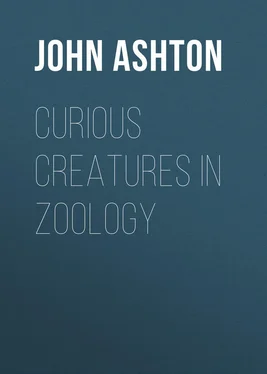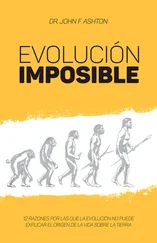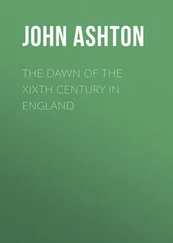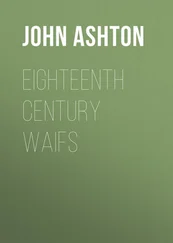John Ashton - Curious Creatures in Zoology
Здесь есть возможность читать онлайн «John Ashton - Curious Creatures in Zoology» — ознакомительный отрывок электронной книги совершенно бесплатно, а после прочтения отрывка купить полную версию. В некоторых случаях можно слушать аудио, скачать через торрент в формате fb2 и присутствует краткое содержание. Жанр: Природа и животные, foreign_antique, foreign_prose, на английском языке. Описание произведения, (предисловие) а так же отзывы посетителей доступны на портале библиотеки ЛибКат.
- Название:Curious Creatures in Zoology
- Автор:
- Жанр:
- Год:неизвестен
- ISBN:нет данных
- Рейтинг книги:4 / 5. Голосов: 1
-
Избранное:Добавить в избранное
- Отзывы:
-
Ваша оценка:
- 80
- 1
- 2
- 3
- 4
- 5
Curious Creatures in Zoology: краткое содержание, описание и аннотация
Предлагаем к чтению аннотацию, описание, краткое содержание или предисловие (зависит от того, что написал сам автор книги «Curious Creatures in Zoology»). Если вы не нашли необходимую информацию о книге — напишите в комментариях, мы постараемся отыскать её.
Curious Creatures in Zoology — читать онлайн ознакомительный отрывок
Ниже представлен текст книги, разбитый по страницам. Система сохранения места последней прочитанной страницы, позволяет с удобством читать онлайн бесплатно книгу «Curious Creatures in Zoology», без необходимости каждый раз заново искать на чём Вы остановились. Поставьте закладку, и сможете в любой момент перейти на страницу, на которой закончили чтение.
Интервал:
Закладка:
Artemidorus states that in the island of Taprobane ( Ceylon ) life is prolonged to an extreme length, while at the same time, the body is exempt from weakness. Among the Calingæ, a nation also of India, the women conceive at five years of age, and do not live beyond their eighth year. In other places again, there are men born with long hairy tails, and of remarkable swiftness of foot; while there are others that have ears so large as to cover the whole body.
Crates of Pergamus states, that the Troglodytæ, who dwell beyond Æthiopia, are able to outrun the horse; and that a tribe of the Æthiopians, who are known as the Syrbotæ, exceed eight cubits in height ( twelve feet ). There is a tribe of Æthiopian Nomades dwelling on the banks of the river Astragus, towards the north, and about twenty days’ journey from the ocean. These people are called Menismini; they live on the milk of the animal which we call cynocephalus ( baboon ), and rear large flocks of these creatures, taking care to kill the males, except such as they may preserve for the purposes of breeding. In the deserts of Africa, men are frequently seen to all appearance, and then vanish in an instant.” 12 12 Mirage.
It may be said that these descriptions of men are only the belief about the time of the Christian era, when Pliny lived – but it was the faith of centuries, and we find, 1200 years after Pliny died, Sir John Mandeville confirming his statements, and, as before stated, these wondrous creatures were given in illustrations, both in the Mappa Mundi, and in early printed books. Mandeville writes: “Many divers countreys & kingdoms are in Inde, and it is called Inde, of a river that runneth through it, which is called Inde also, and there are many precious stones in that river Inde. And in that ryver men finde Eles of xxx foote long, & men yt dwell nere that river are of evill colour, yelowe & grene…
“Then there is another yle that men call Dodyn, & it is a great yle. In this yle are maner diverse of men yt have evyll maners, for the father eateth the son, & the son the father, the husband his wyfe, and the wyfe hir husbande. And if it so be that the father be sicke, or the mother, or any frend, the sonne goeth soone to the priest of the law & prayeth him that he will aske of the ydoll if his father shall dye of that sicknesse, or not. And then the priest and the son kneele down before the ydole devoutly, & asketh him, and he answereth to them, and if he say that he shall lyve, then they kepe him wel, and if he say that he shall dye, then commeth the priest with the son, or with the wyfe, or what frende that it be unto him yt is sicke, and they lay their hands over his mouth to stop his breath, & so they sley him, & then they smite all the body into peces, & praieth all his frendes for to come and eate of him that is dead, and they make a great feste thereof, and have many minstrels there, and eate him with great melody. And so when they have eaten al ye flesh, then they take the bones, and bury them all singing with great worship, and all those that are of his frendes that were not at the eating of him, have great shame and vylany, so that they shall never more be taken as frends.
“And the king of this yle is a great lord and mightie, & he hath under him liii greate Yles, and eche of them hath a king; and in one of these yles are men that have but one eye, and that is in the middest of theyr front, and they eat flesh & fishe all rawe. And in another yle dwell men that have no heads, & theyr eyen are in theyr shoulders & theyr mouth is on theyr breste. In another yle are men that have no head ne eyen, and their mouth is in theyr shoulders. And in another yle are men that have flatte faces, without nose, and without eyen, but they have two small round holes in stede of eyen, and they have a flatte mouth without lippes. And in that yle are men that have their faces all flat without eyen, without mouth & without nose, but they have their eyen, and their mouth, behinde on their shoulders.
“And in another yle are foule men that have the lippes about the mouth so greate, that when they sleepe in the sonne they cover theyr face with the lippe. And in another yle are little men, as dwarfes, and have no mouth, but a lyttle rounde hole & through that hole they eate their meate with a pipe, & they have no tongue, & they speake not, but they blow & whistle, and so make signes one to another. And in another yle are wild men with hanging eares unto their shoulders. And in another yle are wild men, with hanging eares & have feete lyke an hors & they run faste, & they take wild beastes, and eate them. And in another yle are men that go on theyr handes & feete lyke beasts & are all rough, and will leape upon a tree like cattes or apes. And in another yle are men that go ever uppon theyr knees marvaylosly, and have on every foote viii Toes…
“There is another yle that men call Pitan, men of this lande till no lande, for they eate nought, and they are smal, but not so smal as Pigmes. These men live with smell of wild aples, & when they go far out of the countrey, they beare apples with them, for anon, as they lose the savour of apples they dye – they are not reasonable, but as wyld beastes. And there is another yle where the people are all fethers, 13 13 Other editions read rough hair .
but the face and the palmes of theyr handes, these men go as well about the sea, as on the lande, and they eate flesh and fish all raw… In Ethiope are such men that have but one foote, and they go so fast yt it is a great marvaill, & that is a large fote, that the shadow thereof covereth ye body from son or rayne, when they lye upon their backes; and when their children be first borne they loke like russet, and when they waxe olde then they be all black.”
There were also elephant-headed men.
In the olden times were men who did not build themselves houses – but sheltered themselves in caves, fissures of rocks, &c., and many are the remains we find of their flint implements, and the bones, which they used to split in order to extract the marrow of the animals they had slain with their rude flint arrows and spears. These, in classical times, were called Troglodytes (from the Greek τρωγλοδὺται, dwellers in caves ). It was a generic term, although particularly applied to uncivilised races on the banks of the Danube – those who dwelt on the western coasts of the Red Sea – and Ethiopia. These latter could not have led a particularly happy life, for Herodotus tells us that the “Garamantes hunt the Ethiopian Troglodytes in four horse chariots; for the Ethiopian Troglodytes are the swiftest of foot of all men of whom we have heard any account given. The Troglodytes feed upon serpents and lizards, and such kind of reptiles; they speak a language like no other, but screech like bats.”
Pliny, as we have seen, speaks of an adder eating people, whose food enables them to achieve extraordinary longevity, and Mandeville tells us that “From this yle, men go to an yle that is called Tracota, where all men are as beastes, & not reasonable, they dwell in caves, for they have not wyt to make them houses – they eate adders, and they speake not, but they make such a noyse as adders doe one to another, and they make no force of ryches, but of a stone that hath forty colours, and it is called Traconyt after that yle, they know not the vertue thereof, but they covete it for the great fayreness.”
This stone was probably some kind of agate. It could not possibly have been a topaz, as some have thought, as the context from Pliny will show. “Topazos is a stone that is still held in very high estimation for its green tints; indeed, when first it was discovered, it was preferred to every other kind of precious stone. It so happened that some Troglodytic pirates, suffering from tempest and hunger, having landed upon an island off the coast of Arabia, known as Cytis, when digging there for roots and grass, discovered this precious stone; such, at least, is the opinion expressed by Archelaüs. Juba says that there is an island in the Red Sea called Topazos , at a distance of three hundred stadia from the mainland; that it is surrounded by fogs, and is often sought by navigators in consequence; and that, to this, it received its present name, the word Topazin 14 14 In Greek, Τοπάζω, means to guess, divine, or conjecture.
meaning “to seek” in the language of the Troglodytæ… At a later period a statue, four cubits in height, was made of this stone… Topazos is the largest of all the precious stones.”
Интервал:
Закладка:
Похожие книги на «Curious Creatures in Zoology»
Представляем Вашему вниманию похожие книги на «Curious Creatures in Zoology» списком для выбора. Мы отобрали схожую по названию и смыслу литературу в надежде предоставить читателям больше вариантов отыскать новые, интересные, ещё непрочитанные произведения.
Обсуждение, отзывы о книге «Curious Creatures in Zoology» и просто собственные мнения читателей. Оставьте ваши комментарии, напишите, что Вы думаете о произведении, его смысле или главных героях. Укажите что конкретно понравилось, а что нет, и почему Вы так считаете.












